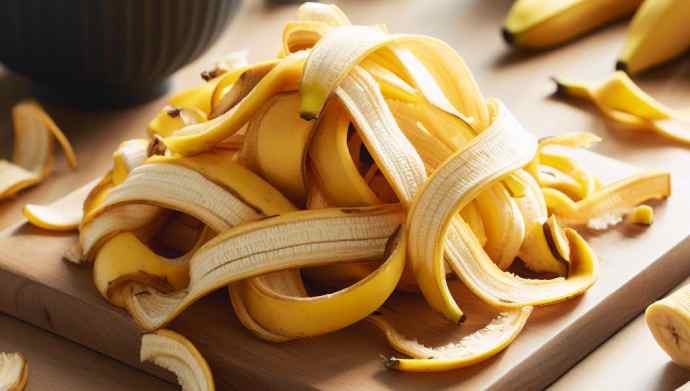 The passion fruit (Passiflora edulis) is one of the most versatile fruits existing. It can be used for the preparation of cakes, desserts, juices and can also be fully used in recipes that use its seeds and peels. This fruit has long been recognized for its medicinal properties as well , including a calming effect recognized by experts around the world. Although passion fruit is very popular, giving beautiful fruits and flowers that bring beauty and pollinators to our gardens. What few people know is that we can plant passion fruit in pots. That’s how:
The passion fruit (Passiflora edulis) is one of the most versatile fruits existing. It can be used for the preparation of cakes, desserts, juices and can also be fully used in recipes that use its seeds and peels. This fruit has long been recognized for its medicinal properties as well , including a calming effect recognized by experts around the world. Although passion fruit is very popular, giving beautiful fruits and flowers that bring beauty and pollinators to our gardens. What few people know is that we can plant passion fruit in pots. That’s how:
There are three possibilities for planting passion fruit. But, before talking about planting, it is necessary to choose a suitable pot and a right place for the plant to grow. The container must have a capacity of at least 50 liters . To fill it, a substrate consisting of organic compost, earth and sand must first be used . It is important to remember that moisture can damage seeds and roots , so it is important that the drainage from the pot is good.
Since passion fruit is a fruit from tropical climates, the ideal is to choose a place with direct sunlight for most of the day. This is a plant that loves the heat of at least 20 ° C and preferably above 25 ° C . One of the indicators that the temperature or sun exposure is insufficient is a lack of fruit . The passion fruit tree bears fruit all year round, and its absence can indicate a problem. With the right pot in a sunny and warm place, we can choose between different planting techniques:
seeds Collect the “fresh” seeds, as they will germinate faster. Choose a ripe passion fruit, remove the seeds, wash it and let it dry for a few days. For a 50 liter pot you can use 6 or 7 seeds. Make grooves in the earth and spread the seeds, covering them with a small layer of substrate. Then, spray water on the soil, without soaking, but repeating the procedure every time the soil is dry. The time the seeds start to sprout varies from 15 to 20 days. The second method is as follows:
Choose a ripe and healthy passion fruit foot and look for a branch that has at least 3 buds. Cut the branch immediately below the section farthest from the tip. Plant this branch in the pot, placing a stake to help it grow. The branch will take root in about 2 weeks. The third method is as follows:
Transplanting seedlings
If you have room to plant the passion fruit tree directly on the ground, you can transplant the seedlings from the pot to the ground when they are at least 25cm tall. When choosing the planting location, pay attention that there are no other rooted plants competing for water and space. The hole for receiving the seedling must be the same height as the pot and the same width as the radius of the leaves of the plant. The distance between the seedlings must be at least 40 cm. Carefully remove the seedling from the pot, especially with your root system. The roots of the passion fruit tree are very sensitive and can be damaged in the process. Put it inside the hole and fill it with earth until your passion fruit is firm. The other elements not to be overlooked:
Soil and irrigation
Passion fruit requires well-fertilized, drained and light soil that is free of moisture. Water only when the soil is dry, being careful not to get it wet.
Fertilization
Always give preference to organic fertilizers such as chicken manure or compost produced. Place the fertilizer around the plant at a height that can reach the first leaves. Another tip is to use straw or wood chips around the passion fruit to avoid climbing plants that compete for nutrients and water, as the passion fruit tree has sensitive roots.
Pruning
It is important to prune the passion fruit tree to ensure that all parts, including the lowest ones, receive sunlight. The branches at the base can also be pruned, so that the plant grows stronger and the air circulates on the bottom. Always leave at least 4 “knots” in each branch of your passion fruit, in relation to the base of the branch when cutting. The right time to prune is before flowering. Pruning after flowering can weaken the plant and hinder its productivity. When pruning, it is important to check the main stem, to avoid careless removal.
Support
Passion fruit is a climbing plant and needs support for its growth. You can use fences and attach branches with the help of twine or wire or make a system of poles at least 1.5 meters high. In the case of an earth plant, the cuttings must be at least 2 meters long and have about half a meter fixed to the ground.
Pollination
Bees are usually attracted to passion fruit flowers and do the pollination work. If there are no bees or other pollinating species, you need to take a clean brush and gently brush the pollen from the male flowers and rub lightly on the female flowers.
Pests and Diseases
One of the main problems in the passion fruit plant is aphids. The good news is that it is possible to fight this parasite with ladybugs. They feed on adult insects and eggs, and you guarantee an aphid and poison-free passion fruit foot. Studies show that the productivity of organically grown passion fruit is 3 times higher than using pesticides.



